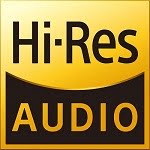A timeless modern classic
The Retro Stereo 50 (and LS3.5 bamboo speakers!) create an old-school yet modern vibe for your living or office space.
Classic, compact and cutting-edge, it’s an integrated stereo tube (valve) amplifier with a hybrid output stage and an output of 25W per channel.

All mod cons
As well as analogue inputs including an excellent phono stage to connect a turntable, it incorporates a hi-res DAC with digital inputs to play music from computers and smart devices.
And there’s Bluetooth, too, for those who prefer to stream wirelessly from their smartphones and tablets.
Superior sonics
We’ve also added our signature sonic ‘optional extras’.
- XBass+ cleans up and restores a richer deeper bass line.
- 3D+ helps to recreates the spaceness of a live stage performance.
Adjust bass and spatial performance with ease as all signals are processed in the analogue domain.
Pitch perfect
Listen via your favourite headphones.
Or add a pair of connected speakers. Our LS3.5 bookshelf speakers are designed specifically to go with the Retro 50.
Whatever you choose, you’ll be immersed in gloriously rich, pitch-perfect, expressive sound.
A solid-state amplifier uses electronics such as diodes and transistors to amplify the music signal. A tube amp uses valves/vacuum tubes to do the same job.
There is a noticeable sound difference between the two methods. Some feel that tube amps create a warmer, more musical tone. Some companies choose to build ‘hybrid’ models that combine the two methods.
A phono stage (also known as a phono pre-amp) provides the connection between the record player and an amplifier.
When vinyl was the defacto standard for audio recording, the phono stage was built-in to receivers and amps, allowing direct connection of a turntable.
It will improve the depth and quality of music.
DACs convert digital information, stored or streamed by computers, into music we can hear through speakers or headphones.
Every device that’s a source of digital sound has a built-in DAC (TVs, games consoles, CD players, phones, portable music players etc). Dedicated external DACs sound much better than standard DACs used in digital devices such as phones.
Digital signal processing (DSP) is the use of digital processing, such as by computers or more specialized digital signal processors, to perform a wide variety of signal processing operations. When it comes to audio the overuse of DSP can result in an over-compressed, unnatural sound.
MP3 – this is the most popular format, every device in the world can use it.
DSD – Direct Stream Digital is a very high-quality audio format, better than CD quality. The higher the number (sample rate), the better the recording – DSD64, 128, 256, 512 and 1024.
PCM – Pulse Code Modulation is the most common format for CDs and DVDs.
DXD – Digital eXtreme Definition is a very high-quality PCM format. It was developed to edit hi-res (high quality) recordings recorded in DSD.




















